Koyo-san, Naoshima, Teshima
- hughker7
- May 11, 2024
- 7 min read
We are catching our breath in the inland seaside city of Takamatsu after two eventful episodes in our Japan travels. We came here for a one day stay and are very lucky that by chance our delightful little 'house' is a five minute walk from the remarkable home and work space of the Japanese / American sculptor Isamu Noguchi. Another case of us absolutely having horseshoes up the ying yang. But let's step back a week or so.
After the Kumano Kudo walk and an interesting 24 hours in a fishing village, we travelled by train, bus and cable car to the mountain town of Koyo-san. Koyo-san is known being where Kukai, the buddha (I think) brought Esoteric Buddhism from China to Japan in the mid 700's. From a beach in China he threw the vajra - the small trident in his left hand in this sculpture - and it landed in a pine tree on the mountain in what would become Koyo-san. There he built the fabulous temple that is the centre of town. Of course like most Japanese temples it burned down numerous times and the one we visited was built in the 70's. You would never know it as it looks absolutely original.
We arrived on a sunny Monday, the last official day of Golden Week and the place was a bit of a mad house. It felt a bit like Banff. We trundled along the short main street and found the temple Shukobo Yochiin where we were staying. There are many such temples / hotels in Koyo-san and it is the vocation of the monks to serve the guests. They are in most cases very old, most rebuilt after an inevitable fire, have beautiful grounds, modest rooms and have an aura of spirituality and respect. You eat communally and mostly in silence - except for a group of young Germans, and painfully crossed legged on a thin floor cushion. Around 6:00 am you have the option - which it appeared everyone took - to attend prayers with a couple of monks in a very ornate prayer room. The chanting is remarkable. Two monks in unison hitting notes and combinations of notes and rhythms that are entirely foreign. After the 30 minute prayer a young European monk spoke and answered our questions. He was very candid and forthcoming, explaining how he came to be there and the emerging crisis of faith that quite probably will take him away. It struck me as somewhat unBuddha like the way the was critical of neighbouring temples and monks who were less than rigorous.
Sue and I were there for only one night. The next day the crowds disappeared, Golden Week over, and we pulled our bags past some quite chi chi temples to our new digs, Shukubo Hojoin, It was late afternoon and we ascended a slightly rising lane, through an ancient gate and there standing in wait at the front door was our lovey and most hospitable monk in training, Kiyo. Over the next 12 hours Kiyo shepherded us to meals, prayers, introduced us to the eighty year old chef and chief gardener and was such a wonderful host. I guess he was one of those slacker monks the devotee at Yochiin talked about. He had previously worked in marketing in NYC. Kiyo took us along narrow halls, indoor and out with beautiful gardens along the walkway, to our private suite at the back of the temple. An emperor's son had once stayed there Kiyo mentioned. That night we had a wonderful meal, bathed in a hot Japanese style bath, and bedded down in a classic tatami room with opening shoji screens to the gardens, heated sheets and the muffled sound of hard rain on a century old roof. Alas we were only there one night but it was a highlight.
Another highlight was an evening walk through the local cemetery that apparently hold 200,000 grave sites. Many are ancient and to walk in darkness along the beautifully lit pathways, through huge trees was incredible. The terminus is the mausoleum of Kukai - a beautiful temple. It is said a candle has been burning inside for 1,000 years and that Kukai, known in his present incarnation as Kobo Daishi, still 'lives' within to guide souls to enlightenment.
The next morning we woke early, had breakfast at Honjoin, then retraced our steps and caught a train for Osaka and on to Okayama where we had a relatively uneventful stay. There is a beautiful park in Okayama, built by the once lord of that prefecture, which is rated in the top three in the country. It was expansive, I'm guessing thirty acres, and meandered in that controlled, chaotic Japanese way. I found it full of interest with quirky 'rest houses', streams, waterfalls...that night we had a fun meal on the main, lively street in a Japanese 'tavern'. Good food, good down to earth atmosphere.
A short observation on food in Japan. Everywhere, whether chi chi Kyoto or a back neighbourhood in working town Tanabe, the restaurants are presented in the same way - very uninviting. They hang a red lantern outside and post a menu but the door will be closed and often obscured by the colourful hanging banners that are elegant and ubiquitous. You can not see in and the timid tourist has to poke their head in and assess. Is it dead? Smoky? is it a restaurant? We have backed away from a few, and just committed to many where there are no westerners, the menu is only Japanese (good luck!) but the vibe is welcoming. I can honestly say we have not had a bad meal and the service has been friendly and helpful. We will look at what people are eating around us - or beside us as usually we are at a counter - and that person, seeing our floundering, will call over the waiter and order for us. We had lunch the other day in a 'taco' hole in the wall (we have rarely eaten western food), and sat beside a couple from Switzerland. We were by the seaside, at a counter, looking through a slit of a window to the boats at the dock and the woman lamented how in Europe there would be terraces and cafes and people would be chatting and drinking. We had to agree. We have only seen one 'terrace' / outdoor bar in Japan. Meals seem to be a neighbourly but insular affair. Side note: A couple of times recently we have not had a restaurant option and have gone to a 7-11and got packaged take out, warmed it in a microwave or stir fried and had a great meal.
Kyo-san was a highlight and so were the past three days on the 'art' islands, Naoshima and Teshima (alas we had to forgo the third Inujima). They are a short ferry ride from just east of Okayama in what has been described as a protected, inland sea. Naoshima is the largest and most famous island due to the presence of several iconic buildings / galleries designed by the most notable late twentieth century Japanese architect Tadao Ando. The island is also scattered with sculptures and public art, some of the most impactful housed in historical houses in one of the island settlements. At the epicentre is a high end hotel / gallery called Bennesse House. I tried to get us in there months ago but they must have had some net worth scanning algorithm as I never got a sniff at a reservation. Buses with the subtle Bennese House name and logo ferry the well heeled patrons around the island. For some reason it made me think of the 60's British sci -fi show, The Prisoner, where a sinister huge ball, would force people back when they tried to escape from their perfect surroundings.
Sue and I rented electric bikes and bombed from one amazing architectural / art marvel to another. A highlight was a room designed to house four Monet paintings. We heard the Monet Foundation were strict on the design of the space - it had to have rounded corners, the floor and walls had to be a certain colour and texture, and of course light had to be modulated. In every Ando building - there were at least a 1/2 dozen of varying sizes - there was no artificial light. So when we saw the Monets it was cloudy the the light was very diffuse which gave a very particular experience. The floor, which you had to take your shoes off to walk on, were of small carrera marble tiles about 1" square. In another room, reminiscent of a small city train station hall, there were large installations by an American artist. What impressed me was the precision of the concrete, specifically the form tie holes, which dotted the walls and in such a huge space were not a millimetre out of place. It was so Japanese! As in most indoor installations on the art islands no photos were allowed. That actually made it more relaxing. But outside all bets were off.
After two nights on Naoshima we caught a short ferry ride to Teshima, the middle sized art island. We stayed at a fabulous house recommended by Vancouver friends and were hosted by the wonderful Aki and her two cats, Toto and Lilly. Toto is the CCO - Chief Cat Officer, and Lilly ACO - Assistant Cat Officer. Aki is totally plugged into the island culture including local agriculture and culture. Teshima is like a medium sized Gulf Island with a population of about 3,000. Like Naoshima, art is the driver and specifically the Teshima Art Museum which is one of the most impressive and impactful interior experiences. It houses one art piece, Matrix, which consists of barely perceptible holes in a smooth concrete floor that emit about a tablespoon on water at random intervals. These droplets form, gather, and drain to two shallow depressions in the floor. The number of visitors is limited, no talking, no shoes which creates a profound aura in the space. An incredible space and experience. Loved Teshima, staying with Aki for a night (she cooked us a fabulous meal made of all local ingredients), bombing around narrow, hilly roads on e-bikes and doing our usual purposeful poking around.
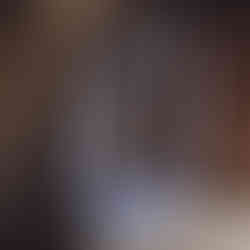






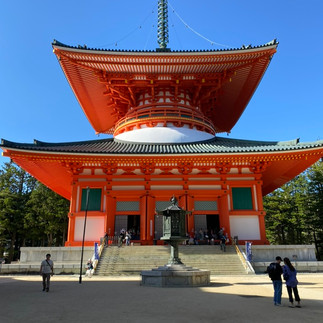


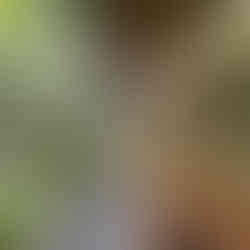









































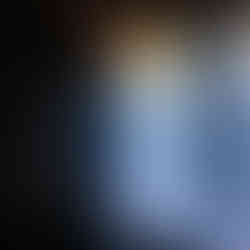



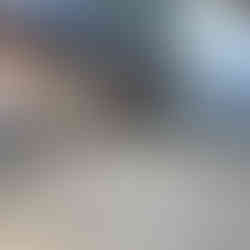











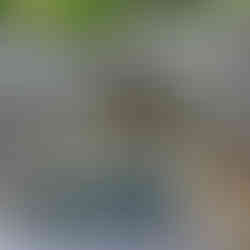













Fantastic photos and commentary! Really enjoyed it all. More please....